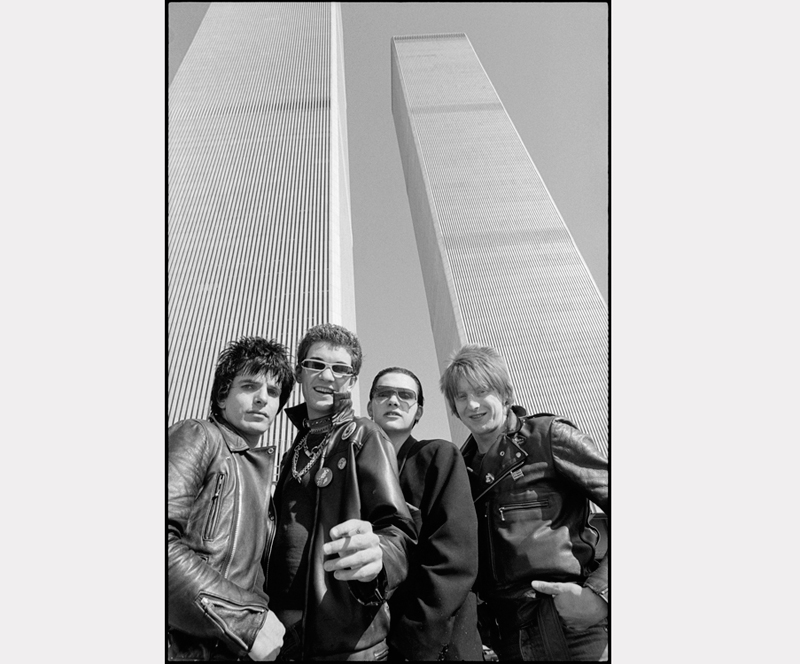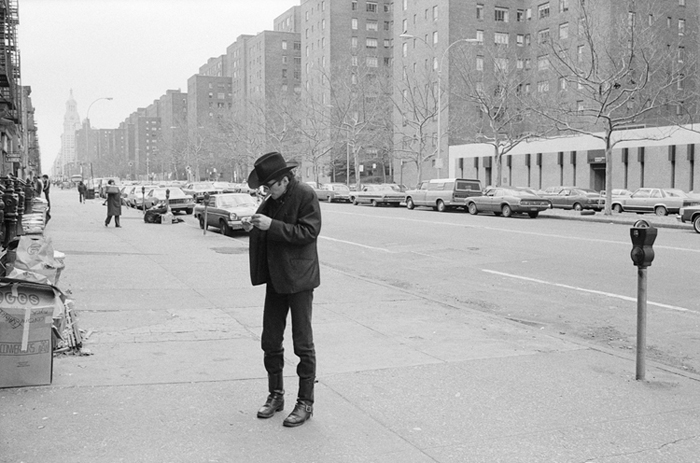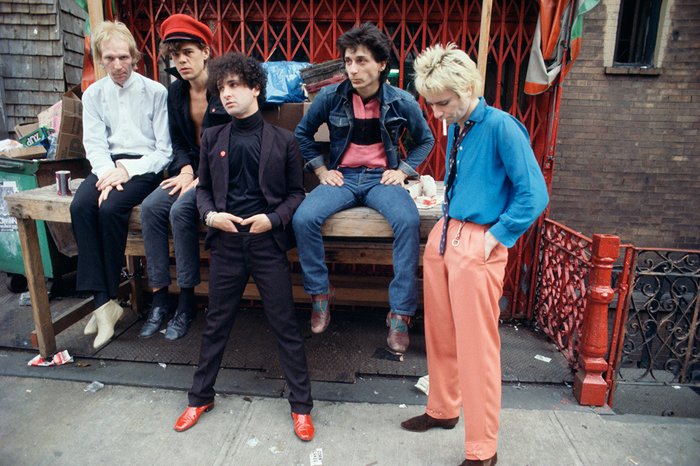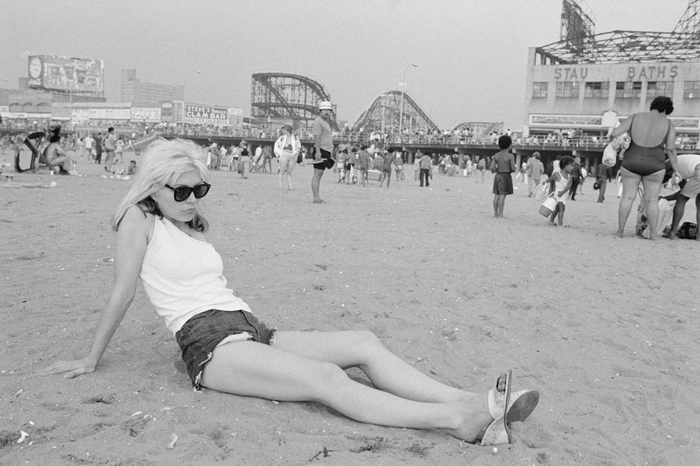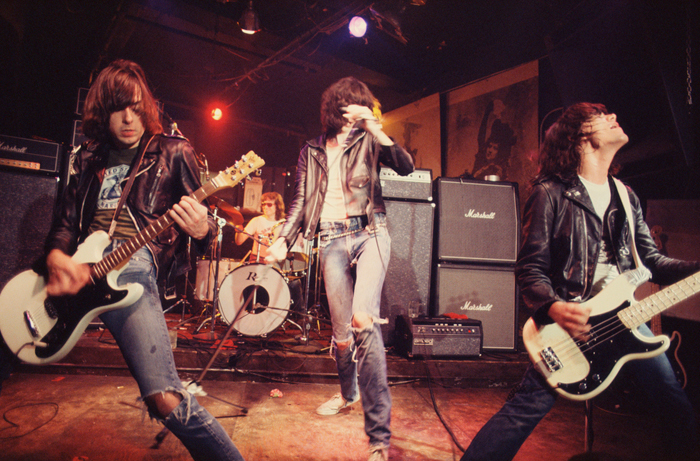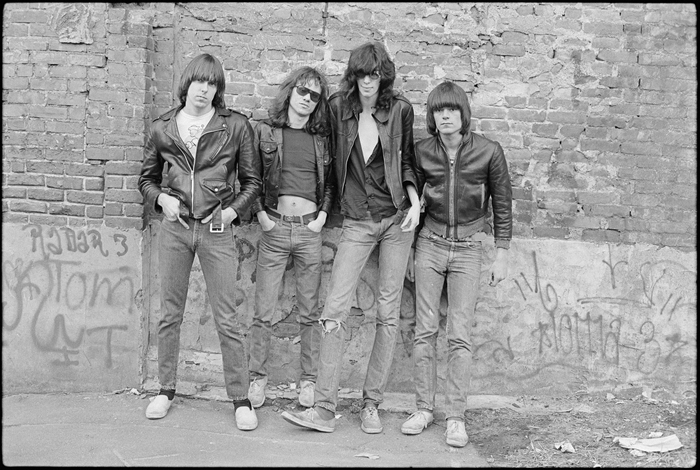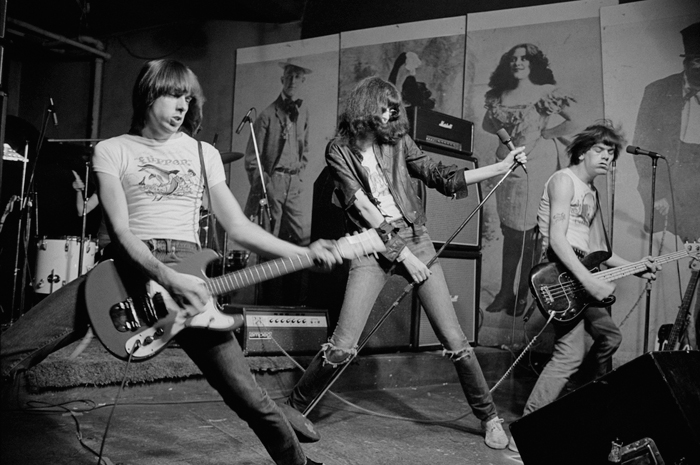Punk Photographer Roberta Bayley
Tuesday, January 29, 2019 by
New York at Its Core recently celebrated its two-year anniversary, and a new section on the downtown punk scene of the 1970s was added to the World City gallery. In researching this topic, I came across the work of photographer Roberta Bayley, who shot the iconic cover for the Ramones' first studio album in 1976. Bayley had been a fixture at CBGB in the 1970s, and was part of the staff of Punk magazine, a seminal publication from that time and place. I recently sat down with Ms. Bayley to hear her thoughts and reflections on the Ramones, punk, and the East Village…then and now.
Q: When did you arrive in New York City? What drew you to New York?
A: I came to New York in April of 1974. The reason I came was that I had a one-way ticket from London; no other real reason…I wanted to get out of London…didn’t know anyone here. I wanted to get on another plane and go to California. But from the moment I got off that airplane, I fell in love with New York City.
Q: What was the city like when you arrived in 1974?
A: It was fantastic. I had been living in London for three years. From the statistics, London had like four murders a year and New York had like 8,000 – and I saw a lot of movies that were out then like Serpico – cop movies with violence and murder, and it seemed like a really, really scary place. But I never encountered that place. I instead encountered the New York City that I love and live in. I settled into the bohemia of everything that was going on in downtown New York at that time. It just seemed really vibrant, friendly, and creative.
Q: What was that creative scene like? Who were your friends? What kinds of work were they doing?
A: I was just working regular jobs and I met Richard Hell (of the band Television). We became a couple and I moved in with him. That’s when Television was starting to play at CBGB and their manager said “Roberta, why don’t you work on the door and ask for $2.” CBGB’s had been a derelict bar, a biker, Hell’s Angels bar. Television convinced Hilly (Hilly Kristal, the founder of CBGB) that he needed to give them the stage for Sunday nights.
After I broke up with Richard, Hilly asked me if I’d work the door when they had the Unsigned Bands Festival for three weeks in 1975. Hilly had picked up that there were a lot of bands out there that had nowhere to play. He had stumbled across the scene of original bands that didn’t have record contracts, that were trying to do something. His only requirement was that you had to play original music.
CBGB was located in this completely derelict part of town that no one ever wanted to go to. It had become a place where the “lost men” – men of low means and high alcohol consumption lived in these SROs. It wasn’t a really desirable neighborhood, but it was cheap, so we all lived around there. People knew each other and it was a very small scene. Everybody was starting bands, and then Punk magazine came along. It was covering all those bands and that’s how the bands all got lumped together under the rubric of “Punk.” Nobody thought they were punks or even knew that that was.
Q: What is the backstory on Punk magazine? Who started it and how did you get involved?
A: Punk was started by three guys from Connecticut: John Holmstrom, Legs McNeil, and Ged Dunn. They were probably two or three years out of high school. John…wanted a place to publish his art and cartooning. They figured out how to get it printed, did an article on the Ramones, there was a piece on Marlon Brando, and there was some poetry, drawings, cartoons, and comics. It wasn’t necessarily a music magazine, although it was covering some music, and Lou Reed was on the cover.
It was a great magazine. After I read the first issue I felt like “I have to work for these guys…this is everything I’ve waited for in life.” I had just started taking pictures two months before that and had just bought a professional camera in November ’75, which was the exact moment, unbeknownst to me, that they were putting together Punk magazine. So, by the second issue I was a little bit involved and by the third issue I was the photo editor and chief photographer.
Q: When did you start out taking pictures at CBGB?
A: I bought my camera in November of ’75 and I took the Ramones album cover three months later. I’d always had an aspiration to be a photographer but I’d never lived in one place long enough, or had a dark room, or any money, so it didn’t come up. But once I was working at CB’s, I was like “if I don’t get a camera now, when all this really great stuff is going on around me, and I happen to know all these people, and I’m friends with them, and I’m seeing their bands and it’s so great…I have to get a camera.”
I was very lucky that a friend of mine gave me a darkroom and immediately I was published, immediately I was getting record covers. That was instrumental in me developing as a photographer. I just went with it.
Q: That Ramones cover is so iconic. How did that come about? What was it like working with the Ramones?
A: It was never intended to be an album cover. We were Punk magazine…for our third issue we going to put them on the cover. So we went to the Ramones’s loft – we being John Holmstrom, Legs McNeil, and myself. Arturo Vega, their lighting director, was also there. We interviewed them and took some pictures of the loft, which was Arturo Vega’s loft on East 2nd Street, which is now Joey Ramone place. They were ok pictures but I felt like we needed to do something else. We left the loft and walked a little ways down 2nd street, and there was an old playground, kind of beat up, with a chain link fence. We went in there and just took a bunch of pictures. (Sire Records) paid me $125 – I had no choice; they said, “that’s what we’re offering and if you want to do it you have to take it.” The one thing we did make them do was say “Roberta Bayley, courtesy of Punk Magazine,” which is on the record. And the rest is history…it wasn’t thought out. I don’t tell people what to do in my pictures…it kind of just happened. I have good eye. You can learn technique, lighting, but you’ve kind of either got it or you don’t. And I just happen to have it.
Q: What was different about CBGB at that time? What did Hilly do that was different?
A: It was a dump. It was a dive bar. But it was the ONLY PLACE. There was NO PLACE ELSE. All the bands there were looking for other venues. They didn’t even want money. There was no place to play if you played original music. Hilly’s standards were very low and most people were good. Or at least good enough to be interesting. You don’t see the Talking Heads first show and think “oh these guys are going to be big.” You think “this is a really quirky band and they’re kind of fun to watch.”
People were just looking for places for their creative outlets and CB’s was the most welcoming in a way…it was sort of homey, there was an old bookcase, there was a couch, there were dogs running around. For a lot of people, they practically lived there. Hilly would feed people, he’d give them free drinks. When CB’s started letting people play it opened the floodgates…
Q: What are you up to now? Do you still live in the East Village? How do you feel about New York today?
A: Not only do I still live in the East Village, I live in the same apartment that I’ve lived in since 1975. So, I’ve seen a lot. I think there is a community…its being continued a little by the Howl Happening Gallery on East 1st Street run by Jane Friedman, who used to be Patti Smith and John Cale’s manager. Now she has a lively and interesting downtown culture-oriented gallery. She’s trying to show the connection with the scene then and what people are doing now.
The East Village is hard to truly gentrify. Enough of us still have rent control, but we will be the last generation that does. I don’t think they’ve ripped down too many good cultural things – we have a lot of protections. It’s tough, but I don’t see the point of completely, constantly bemoaning what’s gone. I think it’s the nature of life – change and evolution – there’s no way to stop it. But creativity is still doing ok here…
Visit New York at Its Core to view original issues of Punk magazine and one of Roberta Bayley’s iconic Ramones photographs in person.
This transcript of an audio recording has been edited for clarity.
